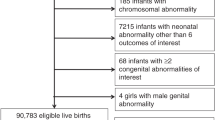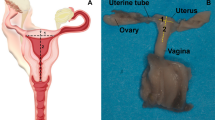Abstract
IN the heterogeneous group of congenital malformations, correlation with factors such as parental age are of etiological and epidemiological significance. Parental age has also a special relevance to the problem of gene mutation induced by ionizing radiation1. The average individual gonad dose received before and during the reproductive period varies greatly in the different populations of the world. Apart from radiation from atomic energy plants and nuclear weapons, this variation is due mainly to differences in natural background radiation and differences in the use of diagnostic X-rays.
This is a preview of subscription content, access via your institution
Access options
Subscribe to this journal
Receive 51 print issues and online access
$199.00 per year
only $3.90 per issue
Buy this article
- Purchase on Springer Link
- Instant access to full article PDF
Prices may be subject to local taxes which are calculated during checkout
Similar content being viewed by others
References
Penrose, L. S., Lancet, ii, 312 (1956).
Penrose, L. S., Amer. J. Hum. Genet., 9, 167 (1957).
Stanton, E. F., Amer. J. Obstet. Gynec., 71, 270 (1956).
David, M. E., and Seski, A., Surg. Gynec. Obstet., 87, 145 (1948).
Böök, J. A., Acta Genet., 2, 289 (1951).
Author information
Authors and Affiliations
Rights and permissions
About this article
Cite this article
BÖÖK, J., FRACCARO, M., HAGERT, C. et al. Congenital Malformations in Children of Mothers Aged 42 and Over. Nature 181, 1545–1546 (1958). https://doi.org/10.1038/1811545a0
Issue Date:
DOI: https://doi.org/10.1038/1811545a0
Comments
By submitting a comment you agree to abide by our Terms and Community Guidelines. If you find something abusive or that does not comply with our terms or guidelines please flag it as inappropriate.



